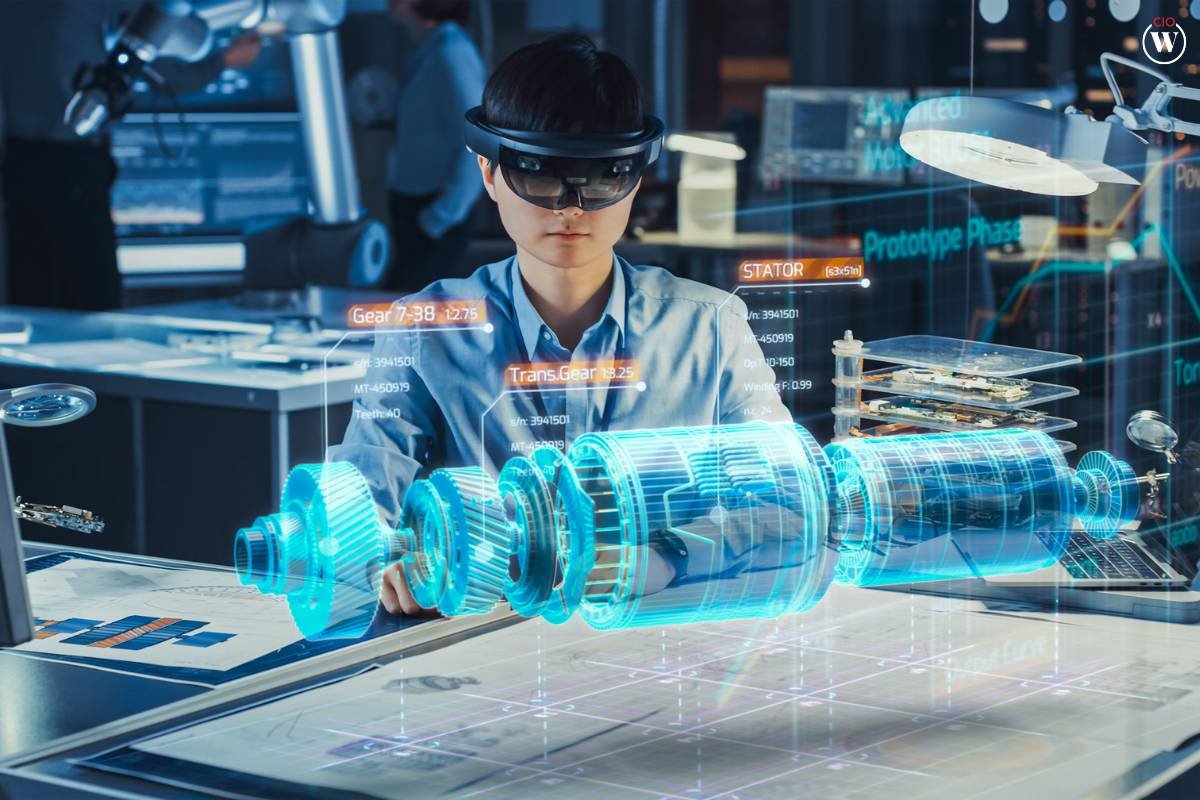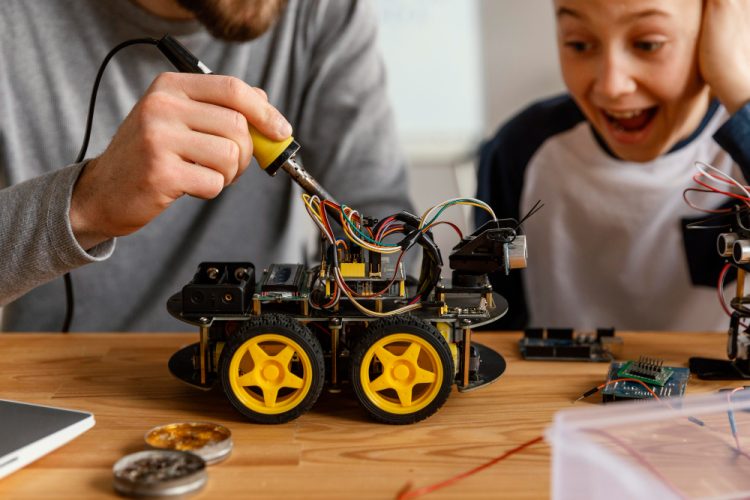The world is experiencing an unprecedented revolution in education, one driven by cutting-edge technologies that promise to reshape how students learn, interact with their surroundings, and engage with information. Among these transformative innovations, robotics stands out as a powerful force with the potential to fundamentally alter the way we approach teaching and learning.
While robotics may initially evoke images of sophisticated machines performing complex industrial tasks, its influence on education is equally profound. From personalized tutoring systems to advanced educational tools, robots have the ability to enhance both the learning environment and educational outcomes in ways that were once confined to the realm of science fiction.
In this article, we will explore how robotics could revolutionize education, focusing on the various ways in which robots could reshape the classroom experience, enhance student engagement, and address global challenges in education.
1. Robots as Personalized Educators
The Power of Customization
One of the most promising aspects of robotics in education is its ability to offer personalized learning experiences. In traditional classrooms, teachers must divide their attention among a wide variety of students, each with their own strengths, weaknesses, and learning preferences. This often leads to situations where some students are left behind, while others feel unchallenged.
Robots, however, can be programmed to adapt to the unique needs of each individual learner. Through artificial intelligence (AI) and machine learning algorithms, educational robots can track a student’s progress in real-time, identifying areas where they need more practice and areas where they excel. These robots can adjust the pace and difficulty of lessons accordingly, providing a tailored learning experience that maximizes student engagement and retention.
For example, robots equipped with AI-driven software could analyze a student’s responses to a series of math problems and, based on their performance, modify the difficulty level of the following set of problems. This kind of adaptive learning ensures that students receive the right level of challenge and support, which is crucial for fostering motivation and avoiding frustration.
2. Robotics in STEM Education
Inspiring Future Innovators
Science, Technology, Engineering, and Mathematics (STEM) fields are often seen as crucial for a country’s long-term economic success, yet there remains a global shortage of professionals in these areas. Robotics could play a key role in addressing this challenge by sparking interest in STEM subjects among students at a young age.

Through hands-on interaction with robots, students can gain a practical understanding of complex STEM concepts. For instance, building and programming a robot requires knowledge of engineering, computer science, and mathematics, all of which are integral to STEM education. By engaging with robots in a meaningful way, students are able to see the real-world applications of the theoretical knowledge they acquire in the classroom.
Moreover, the use of robotics in education provides an engaging, interactive approach to learning. Instead of relying solely on textbooks and lectures, students can experiment with designing robots, coding their behaviors, and solving problems through trial and error. This approach not only enhances understanding but also nurtures critical thinking and problem-solving skills—attributes essential for success in any STEM-related career.
3. The Role of Robots in Special Education
A Helping Hand for Diverse Learners
Robots have an incredible potential to support special education programs, providing personalized learning tools for students with disabilities. Many students with physical, cognitive, or emotional challenges struggle to keep up in traditional classroom settings, but robots can provide tailored assistance in a way that is difficult for human teachers to replicate.
For example, robots can be equipped with speech recognition technology to help students with speech or language delays communicate more effectively. They can also use visual and auditory stimuli to engage students with sensory processing disorders, creating an immersive and interactive learning experience.
In addition, robots can be used as tools to help students with autism spectrum disorders (ASD) practice social interactions in a low-pressure environment. By simulating real-world scenarios, robots can give these students the opportunity to improve their communication skills, understand social cues, and practice appropriate behavior in a safe, controlled setting.
4. Robots as Classroom Assistants
Streamlining Administrative Tasks
Teachers often spend a significant portion of their time on administrative tasks such as grading assignments, organizing lessons, and managing classroom behavior. These tasks, while important, take away from the time teachers could be spending on direct instruction and student engagement. Robotics can ease this burden by taking over certain administrative functions, thereby allowing teachers to focus more on teaching.
For example, robots can be programmed to automatically grade assignments, track attendance, and provide feedback to students on their performance. This can free up valuable time for teachers to provide more personalized support to their students. Additionally, classroom robots could assist in maintaining order and managing classroom activities, ensuring that students stay on task while teachers manage other aspects of the learning environment.
5. Enhancing Remote Learning
Making Education Accessible for All
The COVID-19 pandemic brought to light the vulnerabilities in traditional educational systems, highlighting the challenges of remote learning for students, especially those in underserved regions or with limited access to technology. In response, educational robots could bridge the gap by offering an immersive, interactive remote learning experience.
Robots could be used as physical avatars in virtual classrooms, allowing students to interact with their teachers and peers in a more lifelike and engaging manner. For instance, a robot could be stationed in a classroom, while the student participates remotely. The student would be able to control the robot’s movements, making them feel present in the classroom despite the physical distance. This kind of “telepresence” can help overcome the sense of isolation that often accompanies remote learning.
Additionally, robots can assist in creating dynamic learning experiences that go beyond standard video calls and prerecorded lessons. Robots could offer real-time simulations, allow students to conduct virtual experiments, and engage in interactive learning activities that mimic the hands-on experiences found in traditional classrooms.
6. Robots for Lifelong Learning
Education Beyond the Classroom
Learning should not stop after formal education ends. In an era where technology is evolving rapidly, lifelong learning has become essential for individuals to remain competitive in the job market. Robotics can be leveraged to support lifelong learning by offering personalized, on-demand educational experiences.
For instance, robots equipped with AI can provide adult learners with customized courses tailored to their career development goals, whether it be acquiring a new skill, advancing in their current profession, or switching careers. These robots can guide learners through a variety of subjects—ranging from coding to entrepreneurship—and offer assessments, progress tracking, and feedback to keep learners engaged and motivated.

Moreover, robotics can be used in professional development workshops or corporate training sessions, where employees can interact with robots to improve teamwork, leadership, and technical skills. This creates an innovative learning environment that fosters continuous improvement and adapts to the ever-changing demands of the workforce.
7. Overcoming Challenges: The Road to Integration
While the potential benefits of robotics in education are undeniable, there are several challenges to overcome before this technology can be fully integrated into classrooms worldwide. These challenges include high costs, resistance to change, and the need for proper teacher training.
High Costs: Initially, the cost of implementing robotics in education could be prohibitive for some schools, especially in low-income or developing regions. However, as technology advances and production scales up, the costs of robots are expected to decrease, making them more accessible to educational institutions.
Resistance to Change: Many educators and administrators may be hesitant to adopt robotics due to a lack of understanding or fear of the unknown. However, by providing comprehensive training and highlighting the potential benefits, schools can overcome this resistance and embrace the future of education.
Teacher Training: To maximize the benefits of educational robotics, teachers must receive appropriate training on how to integrate robots into their classrooms. This includes not only understanding how to operate the robots but also learning how to incorporate them into lesson plans and create a collaborative learning environment.
Conclusion: The Future of Education Is Robotic
As we look toward the future, it’s clear that robotics has the potential to revolutionize education in a variety of ways. From personalized learning experiences to assisting students with special needs, robots are poised to make a significant impact on how we teach and learn. However, the successful integration of robotics into education will require collaboration between educators, policymakers, and technology developers.
The future of education is not just about the tools we use, but how we adapt and evolve to create an environment that nurtures creativity, critical thinking, and lifelong learning. Robotics offers a unique opportunity to reimagine education for the 21st century, empowering students to unlock their full potential and succeed in a rapidly changing world.











































